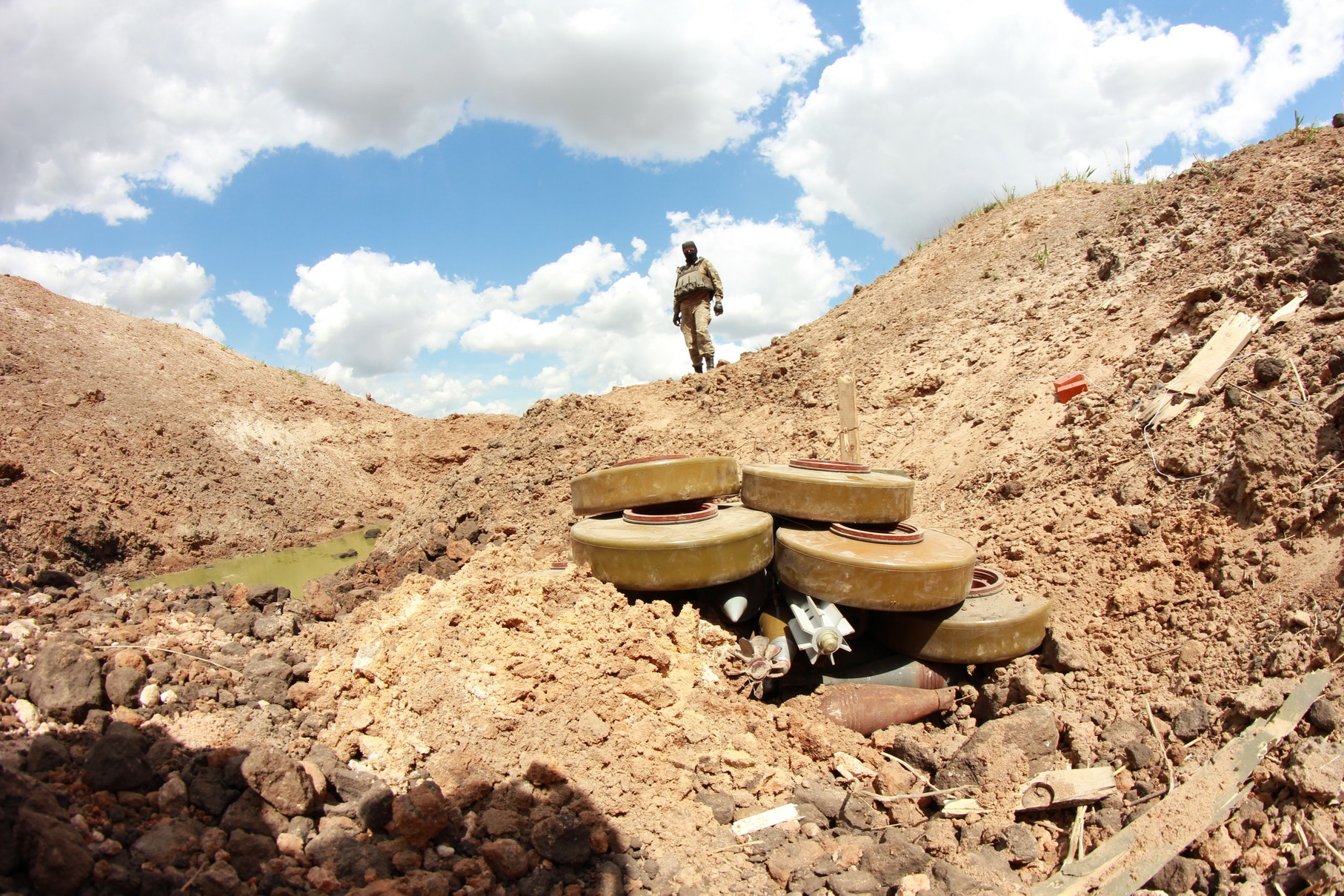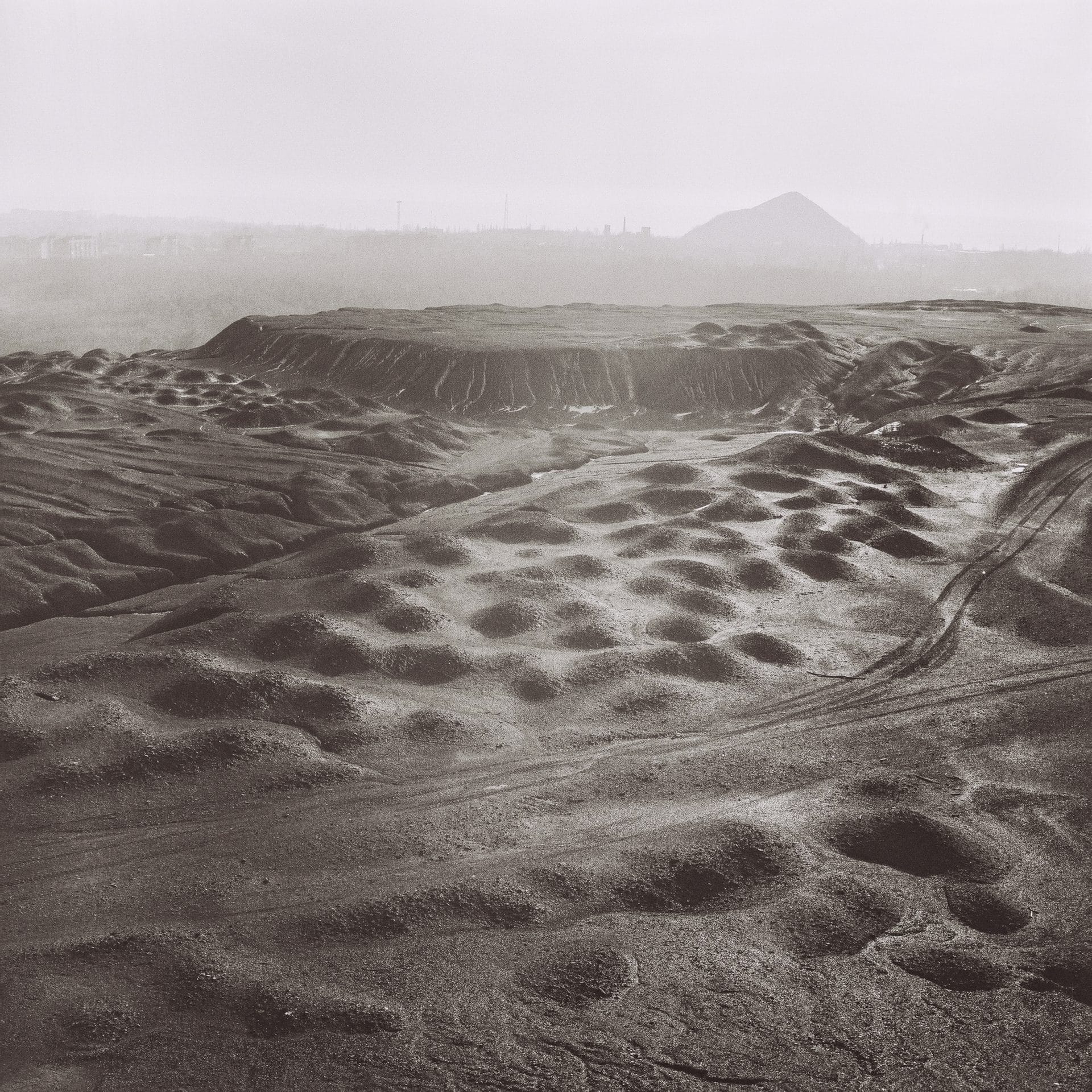
War Has Been an
Environmental Disaster for Ukraine
Jessica McKenzie / Bulletin of the Atomic Scientists
(February 15, 2022) — If Russia embarks on a full-scale invasion of Ukraine — as military maneuvering suggests it might — US intelligence officials estimate that between 25,000 to 50,000 civilians could die. An additional 5,000 to 25,000 Ukrainian soldiers and 3,000 to 10,000 Russian soldiers could also be killed. While the toll on human life would be steep, a full-scale military invasion would also have long-lasting environmental impacts in Ukraine.
Russia has amassed a vast array of weapons within striking distance of Ukraine, including tanks, artillery guns, rocket launchers, ballistic missile systems, and infantry fighting vehicles, according to the Center for Strategic and International Studies. Russian military forces in the area are more than enough to initiate a large-scale invasion of Ukraine, according to Tyson Wetzel, a senior US Air Force fellow at the Atlantic Council’s Scowcroft Center for Strategy and Security.
Timing is everything; some observers have already theorized that President Vladimir Putin is only waiting for a hard freeze to ease a ground invasion. Moving heavy vehicles over soft or thawing ground would not only be difficult but could tear up sensitive wetlands.
One potential invasion route could take Russian military forces through the Chernobyl Exclusion Zone. “The delivery of air-to-surface munitions, artillery, mortar and multiple rocket-launcher fire in the Belarus-Ukraine border area could also disperse radioactive debris in the soil,” Russian military analyst Pavel Felgenhauer told the Washington Post.
The longstanding Russian-Ukrainian conflict in the eastern portion of Ukraine has already had significant environmental consequences, which a full-scale Russian invasion could further exacerbate.
The eight-year conflict with Russian-backed separatists in the eastern Luhansk and Donetsk provinces, which has killed 14,000 people, has shown how war can compound environmental problems. This area, part of the Donbas — short for Donetsky Bassein or “Donets coal basin” — is one of the world’s largest coal mining regions, containing 900 active and inactive mines, as Kristina Hook and Richard Marcantonio reported for the Bulletin in 2018.
These mines are on average over 2,300 feet deep and need to be regularly pumped to prevent groundwater from flooding them. Before the conflict began, the Ministry of Ecology and Natural Resources identified 4,240 sites as potentially hazardous, due to methane leaks, hydro-dynamics, biohazards, and radiation. Before the war started, the ministry monitored these sites to manage environmental and health risks.
But wartime limits the government’s ability to monitor and resolve environmental hazards. Hook and Marcantonio reported that degrading and damaged infrastructure has interfered in trash removal and wastewater treatment. As of 2018, household and industrial sewage was flowing untreated into surface waters, increasing pollution in the Donetsk River, causing fecal coliform levels to surge.
Even more concerning, the ministry identified 35 mines in 2016 where groundwater pumping had ceased, so the mines flooded. Such floodwaters can dissolve heavy metals like mercury, lead, and arsenic and contaminate groundwater. In some cases, these sites were originally mined via nuclear detonations, meaning they’re full of irradiated debris which could be carried out by floodwaters if they aren’t regularly pumped. By 2016, 55 of 66 drinking water sites that had been tested were deemed non-potable; three of them had significantly elevated radiation levels.

Dump rock remnants after coal mining in Ukraine. (Photo: Losev Maksim)
In 2018, Ukraine’s minister of ecology, Ostap Semerak, warned of a potential “second Chernobyl” if Russian-backed separatists intentionally flooded the abandoned YunKom coal mine, where underground nuclear tests in 1979 created a cavernous glass-lined chamber almost 3,000 feet underground called the Object Klivazh. But in April of that year the separatists did just that, turning off the pumps, causing low-level radioactive waste to be carried out with the floodwaters.
Environmental management of industrial sites has also been limited during the conflict. In the port city of Mariupol, residents endure the constant belching of soot and smoke from two steel plants as well as shelling and rocket fire from neighboring Russia. “You can see the smoke — sometimes it’s orange; sometimes it’s gray. There’s a sour smell,” Viktoriia Pikuz, a teacher who lives about half a mile from the Ilyich Iron and Steel Works, told National Geographic in 2021.
The environmental management director of the group that owns the plants blamed the slow progress of environmental upgrades on the ongoing conflict with Russia, which has depleted the nearby workforce of engineering and construction experts and forced the companies to direct limited resources to repairing nearby facilities that have been damaged by fighting.
The Ukraine Crisis Media Center has also highlighted the increased risk of forest fires from military fire or explosions, as happened when 20,000 hectares in the Luhansk region burned in 2020.
These environmental risks are not limited to the Donbas. In the sea town of Berdianske, seven miles from Mariupol in the province of Zaporizhia, the beaches and fields are littered with land mines, the Washington Post reported in 2021. Unexploded or partially exploded ordnance can leach toxic chemicals into the soil and groundwater. Swimming and fishing are off limits.
And while the situation in Donbas was bad in 2018, it had — and has — the potential to become much worse. “One barrage of misfired artillery shells could set in motion a chain reaction that would render large parts of the region uninhabitable, spilling toxic waste into rivers and groundwater, making living there impossible,” Wim Zwijnenburg, a Humanitarian Disarmament Project Leader for the Dutch peace organization PAX, observed in 2018.
Then there is the possibility that Russia could — intentionally or not — strike one of Ukraine’s 15 nuclear power reactors, writes Bennett Ramberg, a former foreign affairs officer in the US State Department’s Bureau of Political-Military Affairs and the author of Nuclear Power Plants as Weapons for the Enemy.
Located at four different sites around the country, these reactors supply approximately half of the country’s energy needs, and attacking them would significantly hamstring a military response by Ukraine — but not without turning the reactors into radioactive mines.
The radioactive debris released in an attack on one or more of the power plants could eventually settle across thousands of miles in the surrounding area, including parts of Russia itself. Even if Putin never ordered a strike on a nuclear power plant, many unplanned things happen in the fog of war. Or, as Ramberg writes, in war “[b]ad stuff happens.”
Posted in accordance with Title 17, Section 107, US Code, for noncommercial, educational purposes